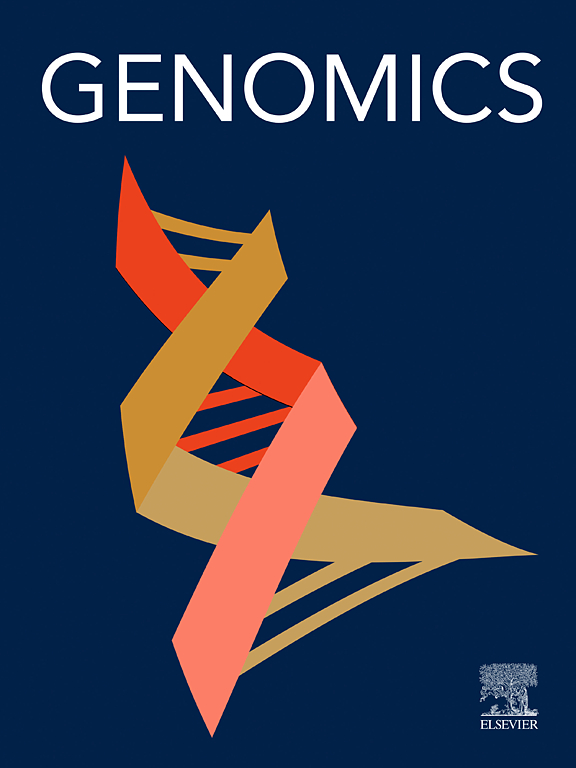可可真菌病原菌黑霉(Moniliophthora roreri)发育过程中转录分析揭示的候选效应蛋白。
IF 3
2区 生物学
Q2 BIOTECHNOLOGY & APPLIED MICROBIOLOGY
引用次数: 0
摘要
结霜荚果腐病(Frosty pod rot, FPR)是由可可疫霉(Moniliophthora roreri)引起的,是美洲可可种植园最具破坏性的病害之一。这种半营养型真菌只感染可可树的果实。它降低了产量,使果实贬值,从而造成经济损失,损害了作物的社会经济潜力。我们分析了在易感植物可可果实提取物中培养的墨氏分枝杆菌孢子和菌丝体的转录组。在不同培养时间的孢子和菌丝中共鉴定出871个差异表达基因(deg)。所鉴定的deg参与多种生物过程和分子功能,包括氧化还原酶功能、蛋白质水解、转录调控、结合过程和应激反应。我们还研究了寄主细胞质和外质体中的分泌蛋白和推测的效应蛋白,发现了1075个编码分泌蛋白的转录本,其中61个是deg, 23个是推测的效应蛋白,与植物细胞壁破坏、氧化应激和碳水化合物代谢有关。数据还显示,在未发芽的孢子和菌丝体的孵育时间之间,转录本的表达量高达50倍,这些转录本被认为是真菌发育中标记基因的候选者。这些分子与线虫的生长、致病性、激酶和氧化还原酶活性等功能有关,在线虫与可可的相互作用中起重要作用。三种候选效应器的功能分析揭示了对叶片形态的影响,主要是叶片干燥和枯萎,最终导致坏死。我们的研究结果扩大了对FPR如何影响寄主植物的分子基础的理解,此外还鉴定了一组需要功能表征以有助于疾病控制的分泌蛋白。本文章由计算机程序翻译,如有差异,请以英文原文为准。
Candidate effector proteins revealed by transcriptional profiling during development of Moniliophthora roreri, a fungal pathogen of Theobroma cacao
Frosty pod rot (FPR), caused by Moniliophthora roreri, is one of the most devastating diseases of cocoa plantations in the Americas. This hemibiotrophic fungus only infects the fruits of the cocoa tree. It reduces yields and devalues the fruits, consequently causing economic losses and compromising crops' socioeconomic potential. We analyzed the transcriptome of M. roreri spores and mycelium incubated in a cocoa fruit extract from susceptible plants. A total of 871 differentially expressed genes (DEGs) were identified in spores at different incubation times and in mycelium. The identified DEGs were found to be involved in several biological processes and molecular functions, among them oxidoreductase function, proteolysis, transcriptional regulation, binding processes and stress response. We also explored the repertoire of secreted proteins and putative effectors located in the apoplast and cytoplasm of the host, and found 1075 transcripts encoding secreted proteins, of which 61 were DEGs and 23 were putative effectors, associated with plant cell wall breakdown, oxidative stress, and carbohydrate metabolism. Data also revealed transcripts with up to 50-fold higher expression between the incubation times of non-germinated spores and mycelium, which are considered candidates for marker genes in fungal development. These molecules were related to functions such as growth, pathogenicity, kinase and oxidoreductase activity, playing important roles in the interaction of M. roreri and Theobroma cacao. Functional analysis of three candidate effectors revealed impacts on leaf morphology, mainly leaf drying and wilting, often culminating in necrosis. Our results expand the understanding of the molecular basis of how FPR affects host plants, in addition to identifying a set of secreted proteins that require functional characterization to contribute to disease control.
求助全文
通过发布文献求助,成功后即可免费获取论文全文。
去求助
来源期刊

Genomics
生物-生物工程与应用微生物
CiteScore
9.60
自引率
2.30%
发文量
260
审稿时长
60 days
期刊介绍:
Genomics is a forum for describing the development of genome-scale technologies and their application to all areas of biological investigation.
As a journal that has evolved with the field that carries its name, Genomics focuses on the development and application of cutting-edge methods, addressing fundamental questions with potential interest to a wide audience. Our aim is to publish the highest quality research and to provide authors with rapid, fair and accurate review and publication of manuscripts falling within our scope.
 求助内容:
求助内容: 应助结果提醒方式:
应助结果提醒方式:


